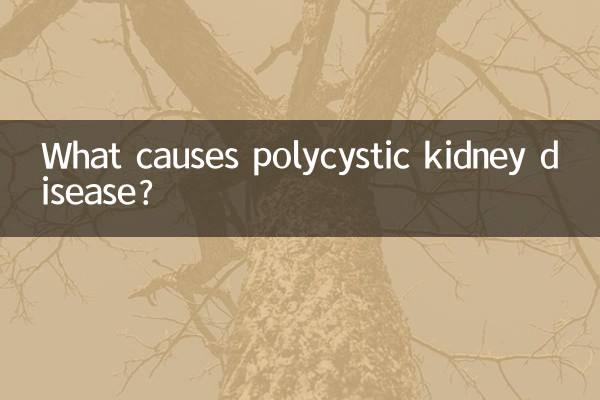What causes polycystic kidney disease?
Polycystic Kidney Disease (PKD) is a common genetic kidney disease characterized by the occurrence of multiple cysts in the kidneys. In recent years, with the deepening of medical research, the cause, diagnosis and treatment of polycystic kidney disease have become hot topics. This article will combine the hot topics of the past 10 days to conduct a structured analysis of the causes of polycystic kidney disease and related data.
1. Genetic factors of polycystic kidney disease

Polycystic kidney disease is mainly divided into two types: autosomal dominant polycystic kidney disease (ADPKD) and autosomal recessive polycystic kidney disease (ARPKD). The cause is closely related to genetic mutations. Here is a comparison of the genetic characteristics of the two types:
| type | related genes | Inheritance | Age of onset |
|---|---|---|---|
| ADPKD | PKD1, PKD2 | autosomal dominant | Adulthood (30-50 years old) |
| ARPKD | PKHD1 | autosomal recessive | infancy or childhood |
Recent research focuses on the mechanisms of PKD1 and PKD2 gene mutations and how to intervene in disease progression through gene editing technologies (such as CRISPR).
2. Influence of environment and lifestyle
Although polycystic kidney disease is primarily caused by genetic factors, environment and lifestyle may also accelerate disease progression. The following are potential influencing factors mentioned in recent studies:
| Influencing factors | possible mechanism | Research progress |
|---|---|---|
| High salt diet | Increase the burden on the kidneys and promote cyst growth | Animal experiments confirmed |
| smoking | Oxidative stress damages kidney cells | Epidemiological investigation support |
| hypertension | Accelerate the deterioration of kidney function | Clinical intervention studies in progress |
3. Cellular and Molecular Mechanisms
Cyst formation in polycystic kidney disease involves abnormalities in multiple cell signaling pathways. The following are the molecular mechanisms that recent research has focused on:
| signaling pathway | effect | Targeted drugs (clinical trial stage) |
|---|---|---|
| mTOR pathway | Promote cell proliferation | Everolimus (somewhat effective) |
| cAMP pathway | Regulate fluid secretion | Tolvaptan (approved) |
| Wnt/β-catenin pathway | Affects cyst epithelial cell differentiation | experimental stage |
4. Progress in Diagnosis and Treatment
Hot topics recently include early diagnosis methods and novel treatment strategies for polycystic kidney disease:
1.imaging technology: The popularity of ultrasound and MRI has increased the detection rate of asymptomatic patients. 2.biomarkers: Exosomal RNA in urine may become an early diagnostic tool. 3.drug research and development: Tolvaptan (V2 receptor antagonist) is currently the only approved drug, but long-term monitoring of liver function is required.
5. Hot issues of concern to patients
According to discussions on social media and medical forums in the past 10 days, the issues patients are most concerned about include:
| question | frequency of occurrence | medical advice |
|---|---|---|
| Will polycystic kidney disease be passed on to the next generation? | high frequency | Genetic counseling and prenatal genetic testing recommended |
| What should I pay attention to in my diet? | Medium and high frequency | Low salt, high quality protein, controlled water intake |
| When is dialysis or transplant needed? | IF | According to the GFR index, intervention is usually required when it is <15ml/min. |
Summarize
The etiology of polycystic kidney disease is complex, with genetic factors predominating, but environmental and molecular mechanisms also play an important role. Recent research focuses on gene therapy and new targeted drugs, bringing hope to patients. Through structured data analysis, we can gain a clearer understanding of the nature and future directions of this disease.

check the details

check the details